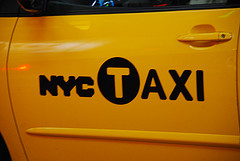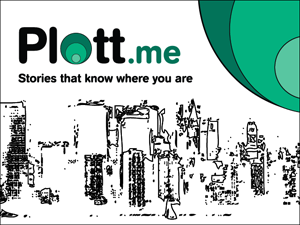Nothing makes me more delighted than finding the heart of my thinking implemented, and implemented well. This type of collaboration can be done. They even have an iPhone app called FixMyStreet! I’m in love.
Good design subway grates
Thoughtfully designed subway grates to prevent runoff and function as both seating and bike rack. Love it.
Bloomberg likes the idea of multi-fare rides
Mayor Bloomberg’s State of the City Speech (on YouTube)
Thursday January 15, 2009, 1 PM
“We’ll also experiment with a common sense idea that will help New Yorkers stretch their own dollars further: the option of taking multiple-fare taxi and livery rides from, for example, airports and other locations. Riders will save money and drivers will make money. It’s a win-win – what’s not to like?”
It is illegal to ride along with taxi drivers
Fieldwork: Renting a zipcar and giving (free) rides

Jonathan, M, 27, smartphone, uses sms/gps
Start of ride: 59th Street, End of ride: West Village
Takes a taxi at least once a day with an average ride of $15,
He is what some call a super user
Jonathan is trusting of people, but impatient. Convenience trumps cost
He is from DC, has lived in nyc 6 years and has taken the subway 3 times
Jonathan is a public transportation anomaly
(Many thanks to Parker for driving!!)
“Don’t boil the ocean.”
I want to boil the ocean, jump over the mountain, collect the stars, and have tea parties in marianas trench.
Plott.me
Make advertising fun
I understand that the city needs to generate revenue, but wrapping public transportation in standard advertising seems unfortunate (although I’m all for more situationist ad campaigns). Ubiquity is not the new exclusivity. If companies want positive brand association in subway stations (or anywhere) they are going to have to provide a service of value, ie. give everyone a free metro pass, insert play, be smart, make people smile; the bar has been raised. I have been thinking about the role of waiting in public transportation and looking at what surrounds us in the interval between here and there. I briefly considered a few possible uses of empty ad space, for example, scrolling books, subway platform exhibitions or curated subways cars by local artists. Bus stops would be a great place to communicate consumer information, especially actionable items like adding your name on the National “Do Not Call” Registry, or removing your name from bulk mailing lists (that generates 4 million tons of paper annually), those things you keep meaning to do but haven’t.
Below are a few creative responses to advertising.
The Bubble Project is an open dialog via thought bubbles pasted on advertising in public space.
Add-Art is a free FireFox add-on which replaces advertising on websites with curated art images.
Light Criticism is a series of overlays on backlit advertising displays.
Poster Boy creates subway-ad mash-ups.
Operator
Operator is a physical installation that calls public payphones by plugging into switchboard nodes
Operator is a physical installation that puts the user in the role of a switchboard operator. Presented with a patchcord and a grid of nodes representing US States, the user can place live calls to public payphones around the country by plugging into a node (or multiple nodes). A list of public telephones in that state are then dialed and all answering parties are bridged into a conference call with the user.
Precedent Telephony Examples – thanks Shawn!
One Free Minute
Pinger
Phoneyvents
The Popularity Dialer
Generative Social Networking!






